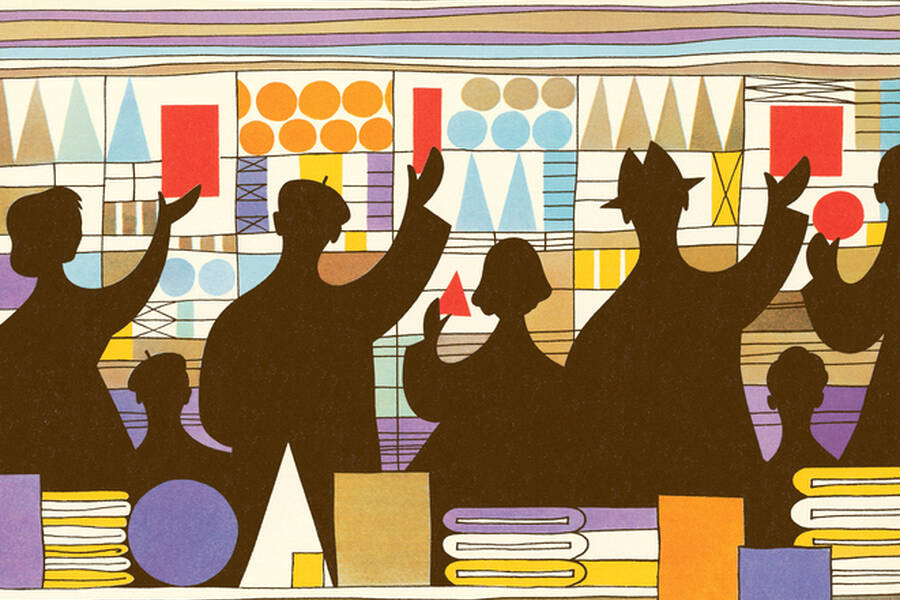
There are purchases that keep purchasing managers up at night—the crucial products and services that contribute to a company’s ability to differentiate its offerings to its customers. These strategic purchases require attention, research, and resources. And then there are all the other necessary but undifferentiated, nonstrategic products and services they are responsible for purchasing. The ho-hum mailing supplies. The unsexy rebar. The sturdy, boring shelving units. Which is not to say that these purchases are not important for the company. But given their lower strategic priority, the purchasing process itself has to happen as efficiently as possible in order to benefit the company. So how does a purchasing manager decide which suppliers to count on for these nonstrategic products, and how do suppliers gain an edge in the process? The key is finding a useful extra to justify the purchase.
The 80/20 Rule
According to recent research by James C. Anderson, the William L. Ford professor of marketing and wholesale distribution at Northwestern University’s Kellogg School of Management, and his colleagues James A. Narus and Marc Wouters, “we’re seeing that some progressive purchasing managers are starting to employ an 80/20 rule, where 80% of their time should be spent on the 20% of the items they purchase that are strategic” to the company’s business.
“That leaves only 20% of their time to purchase the remaining 80%—the nonstrategic items. So that means that they just don’t have the time or the knowledge to spend [on nonstrategic purchases],” Anderson says. “They may be making a purchase decision on these things only once each year or two, so they aren’t really keeping abreast of that item. They’re forced to buy a lot of things they don’t know much about.” This often leads to a “very cursory type of evaluation.”
To overcome this combination of time crunch and knowledge gap and make the right purchases, it is also important for the purchasing manager to involve the supplier as well as the product or service’s users in the process of identifying value-added extras. “[Purchasers] say, ‘the supplier may know more about that then we do, so let them suggest something to us,’” Anderson says.
He suggests that purchasers request “tiebreakers” to help them choose from among competing bids and allow them to justify the purchasing decision. “Going back to the finalists to ask, ‘Is there something more that your business might do for us, other than what we’ve asked for?’ is a way to have one of them stand out so they can make it an easy choice,” Anderson says. “This also makes it easily explainable to the rest of the business.”
A Better Tiebreaker
Interestingly, the winning response most often does not involve price concessions. In their research, Anderson and his colleagues set out to determine whether price concessions were the determining factor in suppliers winning business. “We did not hear a single purchasing manager in our research say they wanted the lowest price,” says Anderson.
There are several reasons why the lowest bid may not have much of an upside for the purchasing manager. “If they always buy at the lowest price, after awhile people ask, ‘why do we have these purchasing guys? We could have software that could do that,’” Anderson says. “Likewise, if they buy at lowest price and anything goes wrong, then it’s on them. ‘What were you thinking? You went for the lowest price and now we have this problem as a result.’”
Indeed, the researchers were surprised to find that price concessions have an unintended consequence. “If the supplier offers a price concession,” Anderson says, “this leads to more work, because then purchasing managers have to go back to the other finalist suppliers, give them a chance to reduce their prices, and then, having done that, they still have to return to finding a justifier: the one noteworthy extra that the other suppliers can’t, or won’t, supply.”
The most practical argument against a lowest-price offer, then, comes down to the decision of where purchasing managers put their resources. “Purchasing managers are looking to get in and out of these purchases quickly. They don’t want to have to start investigating why the prices are so low, particularly if it’s a supplier they don’t have experience with,” Anderson says.
The Next Justifiers
Once a purchasing manager narrows the options, what processes can they and their suppliers employ to find justifiers that add value to nonstrategic purchases? How can they build those processes into their purchasing? The answers are not so simple, given the nature of justifiers themselves.
Justifiers incorporating expertise may be more sustainable than justifiers that add simple operational efficiencies.
In today’s highly segmented marketplace, “you need more justifiers,” Anderson says. “They’re going to have to be more nuanced because it’s more segment-specific ideas. What works for a small-to- medium sized professional-services firm is different from a small-to-medium sized gear shop.”
In addition, Anderson and his colleagues found that justifiers incorporating expertise—such as manufacturing and cutting rebar so that it lies flat (making it easier for construction workers to handle)—may be more sustainable than justifiers that add simple operational efficiencies, like supplying parts with the customer’s own part numbers on the packaging. But by their nature, justifiers have a limited lifespan, as other competitors incorporate those extras into their own offerings.
Advice for Suppliers
Anderson has advice for suppliers hoping to woo purchasing managers, too. He recommends that suppliers focus resources on improving their capability to identify, provision, and deliver justifiers. This includes creating a framework where insights can be generated, for example, as a standard part of a quarterly account review, and then turned into processes.
In a Harvard Business Review article discussing their research, Anderson and his colleagues describe how the shipping company UPS “has reorganized its marketing and selling efforts around targeted industry segments such as health care, retail, and professional services, as well as U.S. regions with strong growth potential,” and has assigned field managers to each region and segment. This increased collection, combined with encouragement from the company’s headquarters to share findings, has resulted in justifiers that have helped the company win significant new business.
What suppliers should not do is assume that, because the purchase is nonstrategic for a customer, it should be treated as a commodity. “Then a commodity mindset kicks in. They think, ‘What’s the only way we can increase profitability for these items? Well, reduce cost. What’s the only way we can reduce our costs? Well, we can reduce the amount of time that’s spent selling these items,’” explains Anderson. “So they up the sales productivity measures such that the salesperson doesn’t really have time to have a real conversation with the purchasing manager about this.” Without building in those conversations, discovering what might help make the offering better for the purchasing company becomes more difficult.
Thus, in the end, Anderson’s advice for suppliers is not all that different from his advice for purchasers. Ask open-ended questions that encourage customers to mention ideas or elements that they would find helpful or attractive. Some of these may have been overlooked or even considered inherent parts of the manufacturing process. But investigating them further to provision a justifier may have clear value to the purchaser’s business—and it may just win you a customer.
Anderson, James C., James A. Narus, and Marc Wouters. 2014. “Tiebreaker Selling.” Harvard Business Review. March.



